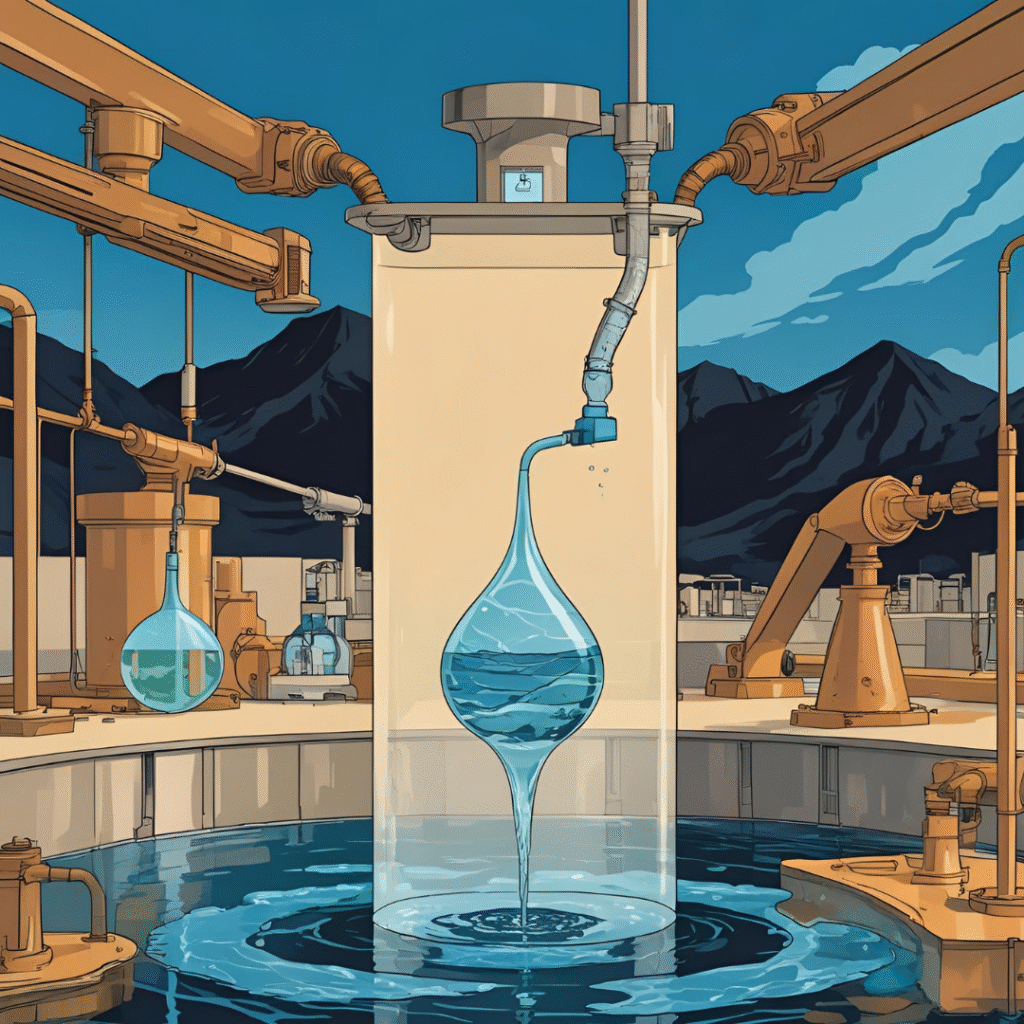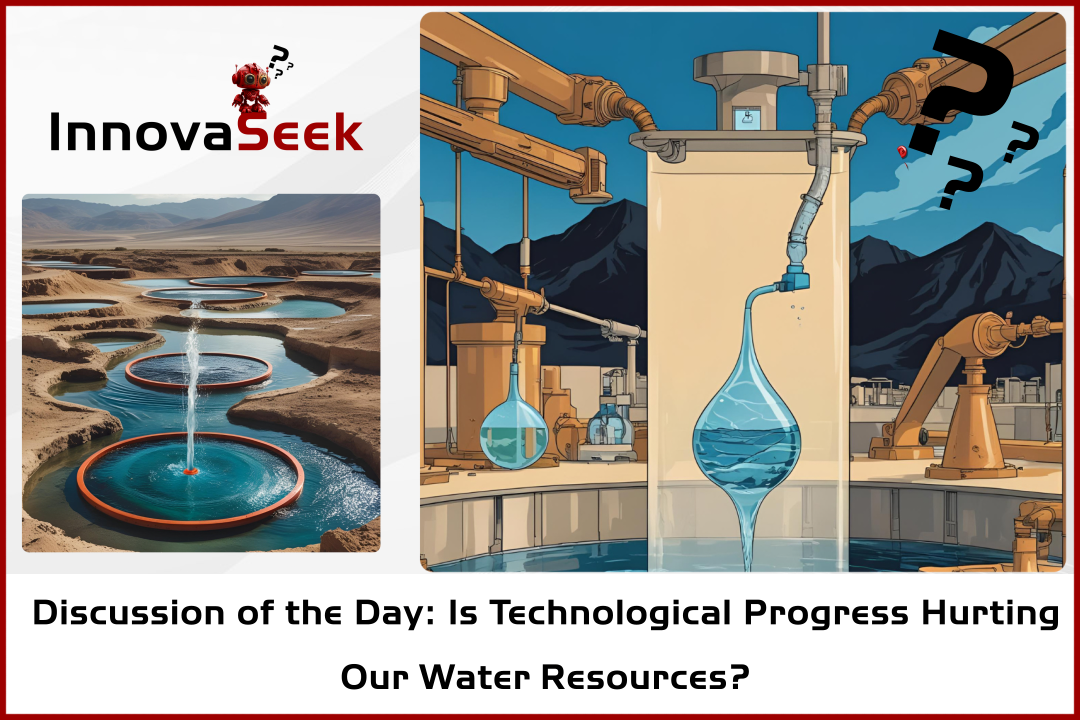Your Turn: Can We Innovate Without Harming Natural Resources?
Great question — and a perfect follow-up to your article on the water impact of data centers. Here’s a new section you can add to the end of your article, or publish as a standalone follow-up post titled:

How Can We Reduce the Water Impact of Data Centers?
Now that we understand how water is used to cool massive server farms, the next logical step is to explore practical solutions. Here are several ways the tech industry — and its users — can help avoid long-term environmental damage:
1. Adopt Alternative Cooling Technologies
- Air Cooling: Using outside air or closed-loop systems to reduce reliance on water.
- Liquid Immersion Cooling: Servers are submerged in non-conductive liquids that cool more efficiently without evaporating water.
- Chillerless Data Centers: Some companies now operate centers in naturally cold climates to eliminate the need for water-based cooling entirely.

2. Locate Data Centers in Water-Abundant Areas
Companies can choose data center locations in regions with sustainable water supplies or cooler climates — such as parts of Scandinavia or Canada — reducing both environmental stress and cooling costs.
3. Use Recycled or Non-Potable Water
Instead of using clean drinking water, some facilities are moving toward greywater or recycled wastewater systems for cooling. This reduces demand on municipal freshwater supplies.
4. Improve Efficiency with AI and Automation
Modern AI tools can:
- Predict cooling needs in real time
- Optimize server loads
- Shut down unused systems
These small changes can significantly reduce energy and water consumption across large facilities.
5. Push for Transparency and Reporting
Governments and environmental groups are encouraging public water usage reports from major tech firms. Transparency helps hold companies accountable and encourages them to adopt more sustainable practices.
6. Raise Awareness as Users
As individuals, we can:
- Choose cloud services from eco-conscious companies
- Reduce unnecessary data usage (e.g., lowering video stream quality or clearing old files)
- Support digital sustainability policies through petitions or informed voting
Final Thought
The cloud feels invisible, but it has a very real environmental cost. The good news? With innovation, transparency, and collective action, we can build a future where technology and sustainability go hand in hand.
💬 Share Your Thoughts

Story…
It’s a beautiful day, and as we go about our routines, let’s dive into a topic that’s often out of sight, out of mind, but has a very real impact on our planet: the hidden environmental cost of our digital lives. We’ve all heard about the “cloud,” that magical place where our photos, emails, and cat videos live. But what exactly is the “cloud,” and how does it relate to something as tangible as water?
Well, the “cloud” is actually a massive network of physical data centers – huge server farms that store and process all the information we generate. And these centers, packed with powerful computers, generate a tremendous amount of heat. To keep them running efficiently and prevent meltdowns (literally!), they need to be cooled, and often, that cooling relies heavily on vast amounts of water. Think about it: our ever-increasing digital footprint means more data, more servers, and consequently, more water being used to keep them cool.
But here’s the good news! The tech industry and us, as users, have a huge role to play in making this digital world more sustainable. It’s not just about turning off lights; it’s about making smarter choices in the digital realm too. Let’s explore some friendly, practical solutions that can help us avoid long-term environmental damage:
1. Embracing Smarter Cooling Tech
The old-school way of cooling involves a lot of water evaporation. But innovative minds are coming up with cool (pun intended!) alternatives. Some data centers are now using air cooling, either by drawing in outside air or using closed-loop systems that recirculate air. Imagine cooling your computer with a fan, but on a massive scale! Even more futuristic is liquid immersion cooling, where servers are literally submerged in non-conductive liquids. This is super efficient and doesn’t evaporate water. And for those really committed, chillerless data centers are popping up in naturally cold climates, completely eliminating the need for water-based cooling. Brrr, in a good way!
2. Strategic Location Choices
Just like choosing a good spot for your home, data center location matters for the planet. Companies can make a real difference by building their facilities in regions with abundant and sustainable water supplies, or in naturally cooler climates. This not only reduces environmental stress but can also cut down on those hefty cooling costs. It’s a win-win!
3. Giving Water a Second Life
Why use pristine drinking water to cool servers when there are other options? Forward-thinking facilities are now turning to greywater or recycled wastewater systems for their cooling needs. This is a brilliant way to reduce the demand on our precious municipal freshwater supplies, leaving more clean water for us to drink and use in our homes.
4. The Power of AI and Automation
Our digital brains, AI, can actually help make the cloud greener! Modern AI tools are becoming incredibly smart. They can predict cooling needs in real-time, ensuring that just the right amount of cooling is applied, no more, no less. They can also optimize server loads, making sure computers are working efficiently, and even shut down unused systems. These seemingly small tweaks, when scaled across massive facilities, lead to significant reductions in both energy and water consumption. It’s like having a super-efficient, environmentally conscious manager for your servers!
5. Shining a Light: Transparency and Reporting
You know what they say: “What gets measured gets managed.” Governments and environmental groups are increasingly pushing for public water usage reports from major tech firms. When companies are transparent about their water consumption, it holds them accountable and encourages them to adopt more sustainable practices. It’s about letting the world see their environmental report card!
6. Your Turn: Becoming a Green Digital Citizen
This isn’t just up to the big tech companies; we, as individual users, have power too! We can:
- Choose cloud services from eco-conscious companies. A little research can go a long way.
- Reduce unnecessary data usage. Do you really need to stream that video in 4K on your phone? Could you clear out those old, unused files from your cloud storage? Every bit helps!
- Support digital sustainability policies through petitions or by making informed choices at the ballot box.



